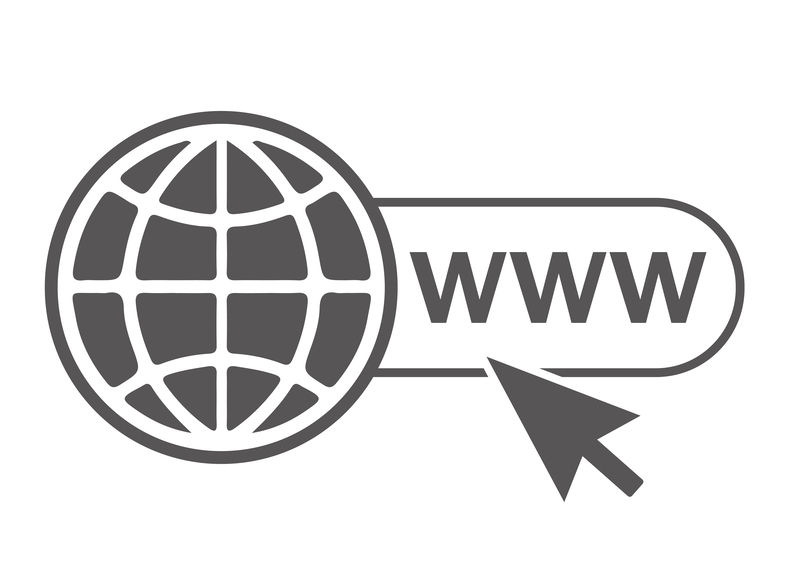Ensuring your freezer's quality during downtime
Posted on 17/05/2025
Ensuring Your Freezer's Quality During Downtime
Freezers play a crucial role in every household and commercial kitchen, keeping food safe and fresh for extended periods. However, downtime--whether due to power outages, maintenance, or any unforeseen circumstances--can pose a significant challenge to the quality of your stored food. This comprehensive article will walk you through various strategies and best practices for ensuring your freezer's quality during downtime, so that both your appliance and frozen goods remain protected.

Understanding Freezer Downtime: Causes and Concerns
Before diving into solutions, it's vital to understand what constitutes downtime for your freezer and why it's a concern. Freezer downtime refers to any period when your freezer is not operating as intended, usually because of power loss, mechanical failures, scheduled maintenance, or even routine defrosting.
- Power outages: Storms, overloaded circuits, or utility company issues may cause your freezer to lose power unexpectedly.
- Scheduled maintenance: Regular cleaning and servicing sometimes require temporary shutdowns.
- Mechanical failure: Faulty components or wear-and-tear can lead to interruptions in service.
- Manual defrosting: Some freezers require you to switch them off periodically for defrosting.
Each of these scenarios puts your frozen foods at risk of spoiling. That's why maintaining your freezer's quality during downtime is essential for food safety and minimizing waste.
How Long Can Freezers Maintain Temperature Without Power?
Most modern freezers are well-insulated and can keep food frozen for a limited time even when not powered. Typically, a fully loaded freezer can retain food-safety temperatures (below 0?F or -18?C) for about 48 hours if the door remains closed. A half-full freezer may only maintain safe temperatures for about 24 hours. Understanding these limits will help you strategize for longer periods of downtime.
Key Factors Affecting Freezer Retention Time:
- Freezer fullness: The more items inside, the better the insulation and the longer the cold is retained.
- Freezer type and size: Upright freezers tend to lose cold faster than chest freezers due to the direction and size of the doors.
- Frequency of door openings: Opening the door lets out cold air, shortening the retention period.
- Ambient temperature: Freezers in hot environments warm up more quickly during downtime.
Why It's Critical to Ensure Freezer Quality During Downtime
Neglecting your freezer's condition during outages or maintenance can result in food spoilage, loss of expensive inventory (for businesses), and even potential health risks due to bacterial growth. Proactively protecting freezer contents during downtime not only saves money but also contributes to food safety and sustainability.
Steps to Protect Your Freezer's Contents During Downtime
1. Keep the Freezer Door Closed
An often-overlooked yet effective step in preserving freezer quality during downtime is to keep the door firmly shut. Every time you open the door, cold air escapes and is replaced by warmer air, hastening thawing.
- Inform everyone in your household or team not to open the freezer during downtime unless absolutely necessary.
- Place signs or reminders on the door if needed.
2. Monitor Internal Temperature
Using a freezer thermometer is critical for maintaining quality during freezer outages. Track the internal temperature to know if food is staying within the safe range (0?F / -18?C or below).
- If the temperature rises above 40?F (4?C) for more than two hours, food safety is compromised.
- Consider installing a thermometer with an alarm feature for added peace of mind.
3. Group Foods Together
Items packed closely together help each other stay colder for longer. If you anticipate a power outage or need to shut down your freezer for maintenance, consolidate the frozen goods to reduce air pockets.
- Arrange items so that they are touching; frozen mass maintains temperature better.
- Move items from the freezer to cooler bags or containers as a last resort.
4. Use Ice and Dry Ice to Extend Coldness
When facing an extended period of downtime, augment your freezer's cooling by adding blocks of ice or dry ice. These substances can dramatically increase the amount of time your food remains safely frozen.
- Ice packs and frozen water bottles are readily available and can fill empty spaces.
- If available, use dry ice--handling with care and ventilation--as it lasts longer and can keep food frozen for days.
- Never touch dry ice with bare hands and keep kids and pets away.
Tip: A full freezer retains cold longer than a half-empty one. If you don't have enough food inside, use containers filled with water to freeze and fill up the space.
5. Prepare for Power Restoration
When power returns or maintenance is finished, take a moment before resetting your freezer's controls or repacking foods.
- Ensure the appliance starts running and reaches the proper freezing temperature before adding back food if it was removed.
- Check for frost buildup or leaks that may have developed.
What To Do With Thawed or Partially Thawed Food
A major aspect of ensuring the safety of freezer contents during downtime is knowing how to handle food that's begun to thaw.
- If food still contains ice crystals or feels refrigerator-cold (below 40?F/4?C), it is generally safe to refreeze.
- Completely thawed foods that have been above 40?F (4?C) for more than two hours should be discarded to avoid foodborne illnesses.
- When in doubt, throw it out.
Download or print food safety charts for quick reference, such as those offered by the USDA, to help make decisions confidently.
Routine Maintenance for Reliable Freezer Performance
A well-maintained freezer is less likely to suffer breakdowns or inefficiency. Take these routine steps to enhance performance and reduce the risk of quality loss during unexpected downtime:
- Clean condenser coils every 6-12 months.
- Inspect door seals for cracks or looseness.
- Keep the interior clean and defrost as required (for manual units).
- Monitor for excessive frost build-up; too much can impact cooling ability.
- Schedule professional servicing every few years or follow the manufacturer's recommendations.
Emergency Preparedness: Power Outage Kits
Stay one step ahead by assembling an emergency freezer downtime kit. Include:
- Thermometers (with alarms, if possible)
- Reusable freezer packs and water bottles
- Dry ice gloves and instructions
- Coolers for emergency transfers
- Annotated food safety guidelines
*Having these supplies on hand ensures that you're ready to act swiftly, minimizing damage and spoilage risk.*
Sustainable Practices: Minimizing Waste During Freezer Downtime
Whether at home or in a commercial setting, reducing food waste is essential for environmental and cost reasons. Protecting frozen food during freezer outages minimizes unnecessary disposal. Consider these sustainable approaches:
- Keep an inventory list so you know exactly what's stored and what should be prioritized in emergencies.
- Cook and consume thawed, safe-to-eat foods immediately rather than refreezing.
- Donate still-frozen, safe-to-eat products quickly to local food pantries (if possible).
- Compost spoiled food, if your local municipality allows it and it's safe to do so.
Technological Tools for Freezer Quality Management During Downtime
Smart technology is making it easier than ever to ensure freezer quality during outages. Consider:
- Smart thermostat sensors and alarms: Alert you via app or sound when temperatures rise unexpectedly.
- Portable battery backups: Can keep your freezer running temporarily during short outages.
- Remote monitoring: Allows off-site awareness and intervention for business freezers.
Leveraging these tools adds an extra layer of protection and peace of mind.
Commercial Freezers: Special Guidelines During Downtime
If you operate a food business, the stakes are even higher. Managing freezer quality during commercial downtime involves FDA and health code compliance, as well as protecting your inventory investment.
- Train staff on emergency response protocols for freezers.
- Maintain backup generators if feasible.
- Regularly audit both freezer performance and food safety during and after downtime.
- Be ready with a plan for rapid food transfer or disposal if temperatures exceed safe limits.
- Document losses and conditions for insurance and regulatory purposes.

Frequently Asked Questions (FAQs)
1. How can I extend the period my freezer stays cold during an outage?
Keep the freezer door closed, fill empty spaces with frozen water bottles or ice packs, and consider adding dry ice for outages longer than a day.
2. Is food safe to refreeze after a power outage?
If the food still has ice crystals or is at 40?F (4?C) or colder, it's safe to refreeze. If it has thawed completely and stayed above that temperature for more than two hours, discard it.
3. What foods should always be discarded after thawing?
Meat, poultry, fish, and dairy should be discarded if they're held above 40?F (4?C) for more than two hours. Fruits and bread can often be refrozen but may have a change in texture.
4. How often should I check my freezer's temperature?
Check at least once a week, and more frequently during known outages. An alarm thermometer makes this easier.
Conclusion: Proactive Steps Equal Peace of Mind
Ensuring your freezer's quality during downtime takes planning, smart habits, and a proactive approach. Every step you take--whether it's simple door discipline, strategic use of ice, or high-tech monitoring--directly protects your food investment and promotes safety. Remember to always prioritize food safety, maintain your freezer regularly, and be prepared for emergencies to minimize risks to your frozen goods.
By building these strategies into your household routine or business operations, you'll enjoy greater peace of mind knowing that your freezer's quality and the safety of its contents are secured even during unplanned downtime.



 Guide price for the hire of a Transit Van /up to 300 cu ft/.
Guide price for the hire of a Transit Van /up to 300 cu ft/.